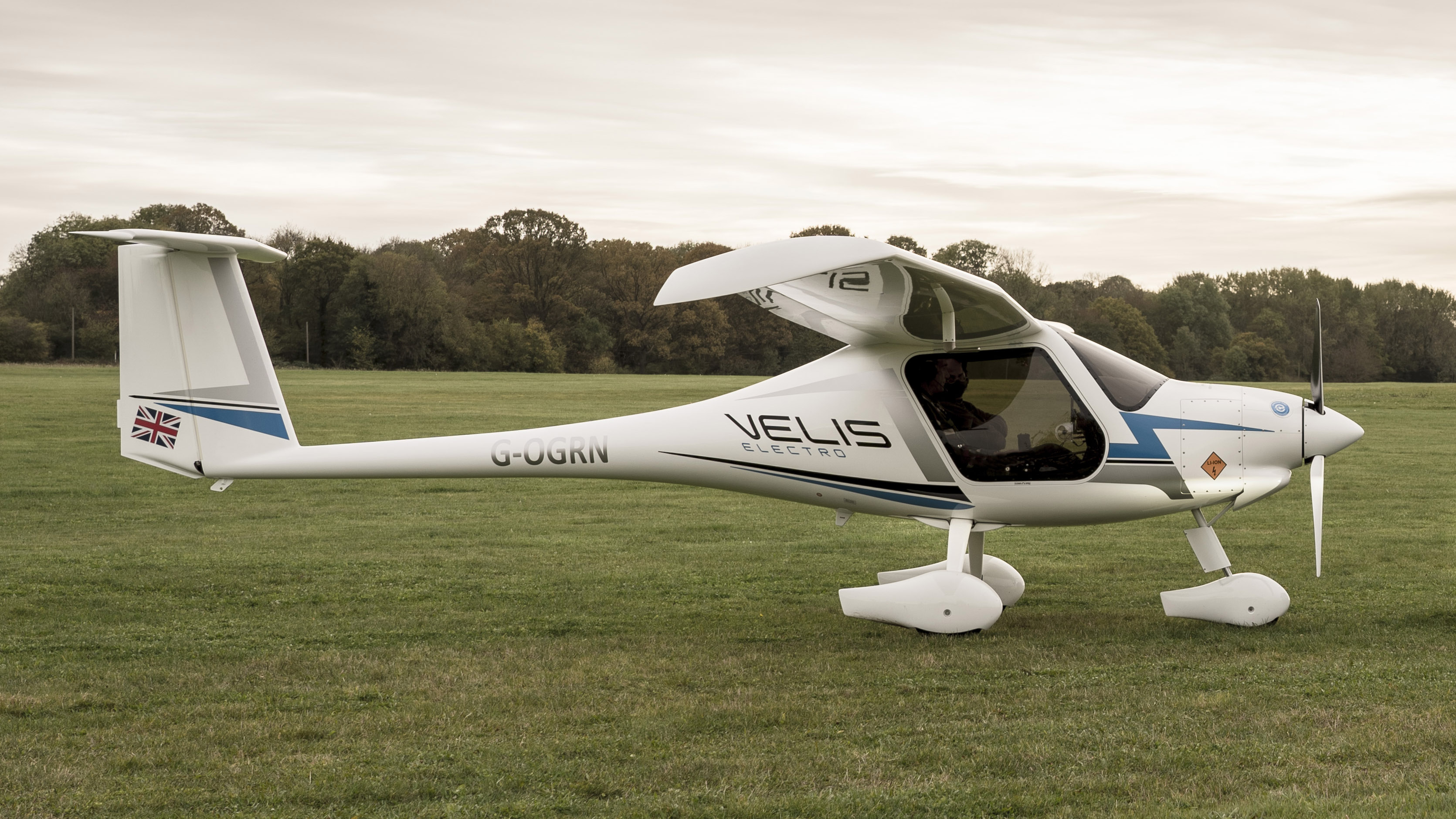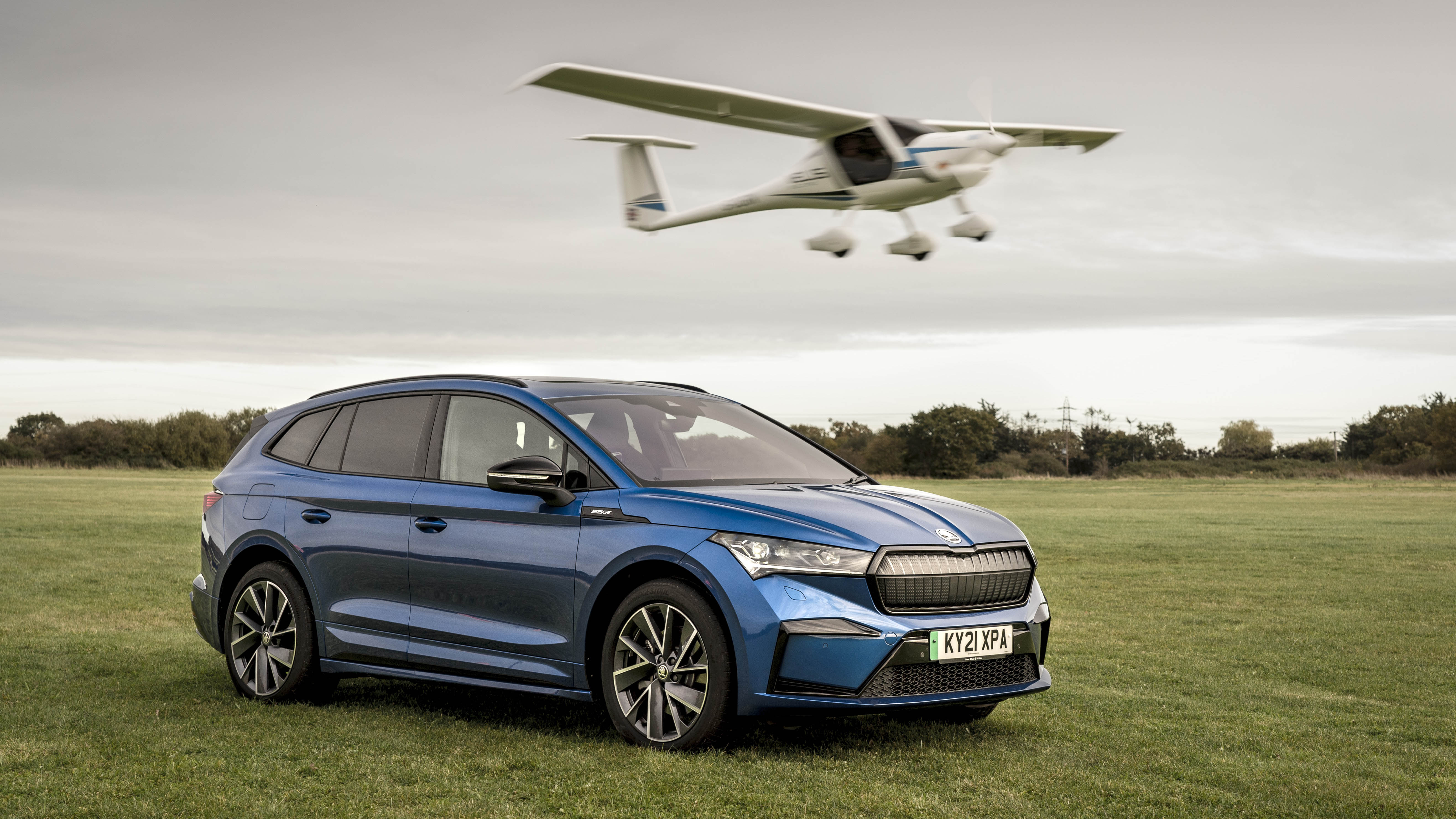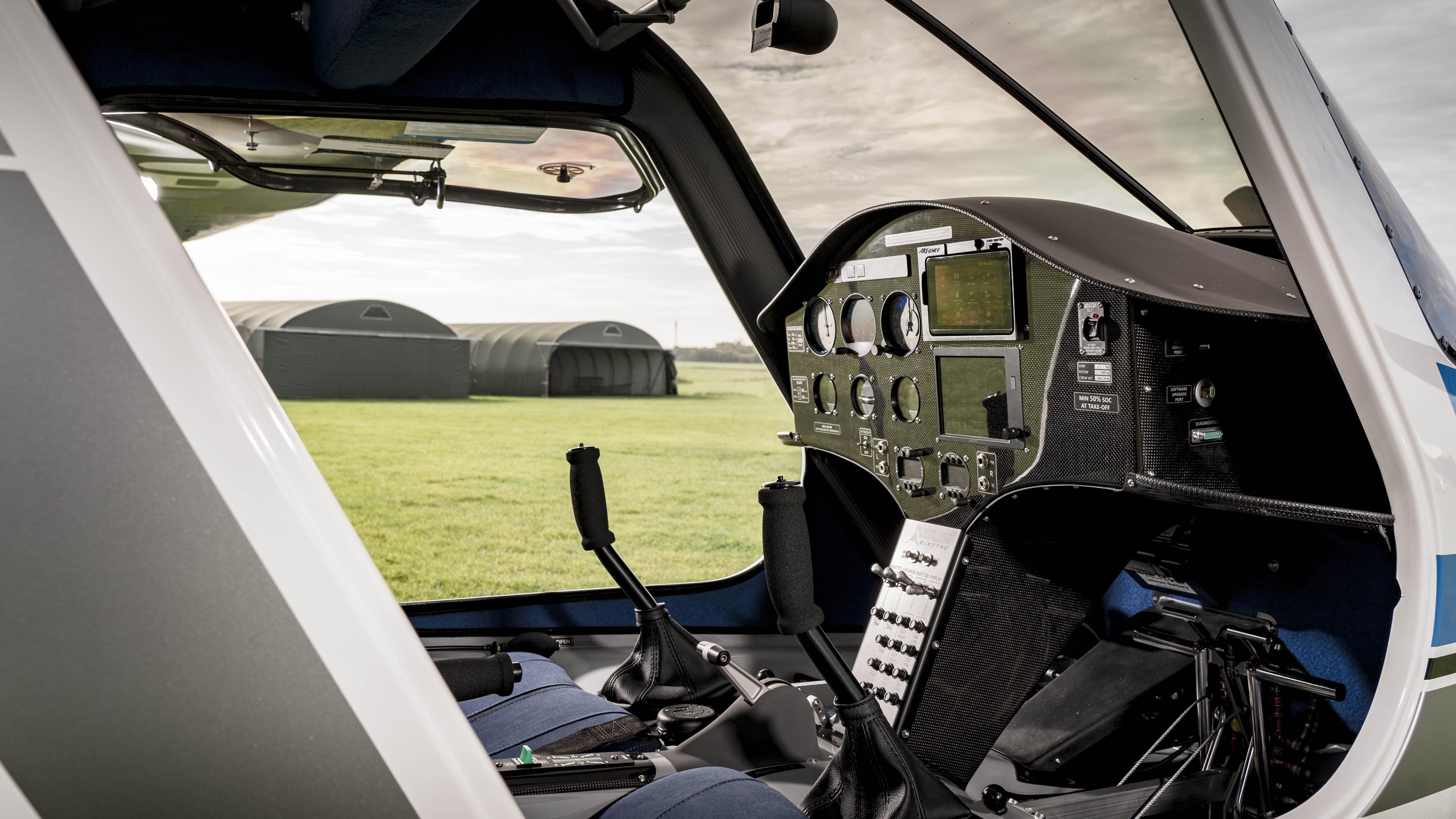
Pipistrel Velis Electro review
Driving
What is it like to drive?
We co-piloted the Velis Electro from Damyns Hall Aerodrome in Upminster and flew up to the edge of Canary Wharf on a bright but breezy day, before hooking back to base and avoiding the business jets coming in to land at London City Airport.
London Airsports Centre boss (and the man tasked with taking TG skyward) Deepak Mahajan says that since they started flying the all-electric Velis, neighbours of the airfield have commented that they can now hear the birds again in their gardens. How quaint.
It really is quiet too, even from inside the pokey carbon-filled cockpit. Not too much of a relation to the Enyaq in here, though – there’s a point in favour of the Skoda.
So how do I make it go?
This might be the quickest flying lesson ever (or perhaps not if the advice in the good old days used to be “give it a go and see what happens”). The controls are as follows – essentially you set the speed with a low-mounted lever and then control all steering inputs with the joystick between your legs and the foot-operated rudder pedals where you’d expect to find accelerator and brake pedals in the EVs that we’re more used to running. That’s all you really need to know. The controls are replicated in both seats as you’d find in your driving instructor’s car.
Pre-flight checks are remarkably quick without engine oil, fuel and the like. No need to warm the engine up either, although a few blips of the throttle on the runway helps to up the temperature of the batteries. Take-off is a little tricky with bumpy grass underneath and plenty of wind up above, but after a quick call to Heathrow Air Traffic Control we’re up. The maximum weight including passengers is just 600kg, so the Velis really is affected by bad weather.
Once you’re up at altitude it’s brilliantly calm though, despite the extra turbulence that can come from large buildings and hills. Pipistrel claims a maximum noise level of just 60 decibels so you can chat away on the headsets with remarkable views of your surroundings.
Is it quick?
A cruising speed of just over 100mph means it’ll cover ground quickly once you’re up in the air, and you’ll only be using 46bhp while you’re at it. For some reason aircraft builders don’t quote 0-62mph times, but the Velis does only need 246m of space to take off on a grass runway. With 76bhp acceleration isn’t exactly up to Rimac standards, but that’s probably for the best what with all the flying you need to do at the other end of the drag strip.
Anything else I need to know?
Ah yes – just make sure you don’t take off with the battery at any less than 50 per cent. That wouldn’t be ideal. Range is relative, but Deepak reckons on a safe flying time of between 45 minutes and an hour from a full charge. Pipistrel says that works for most flight school applications and offers a “compromise between performance, environmental robustness and battery system lifetime".
Worth noting that the range indicator will drop massively when you use full throttle taking off too. That’s more than a little disconcerting…
Featured

Trending this week
- Car Review
BMW 1 Series






